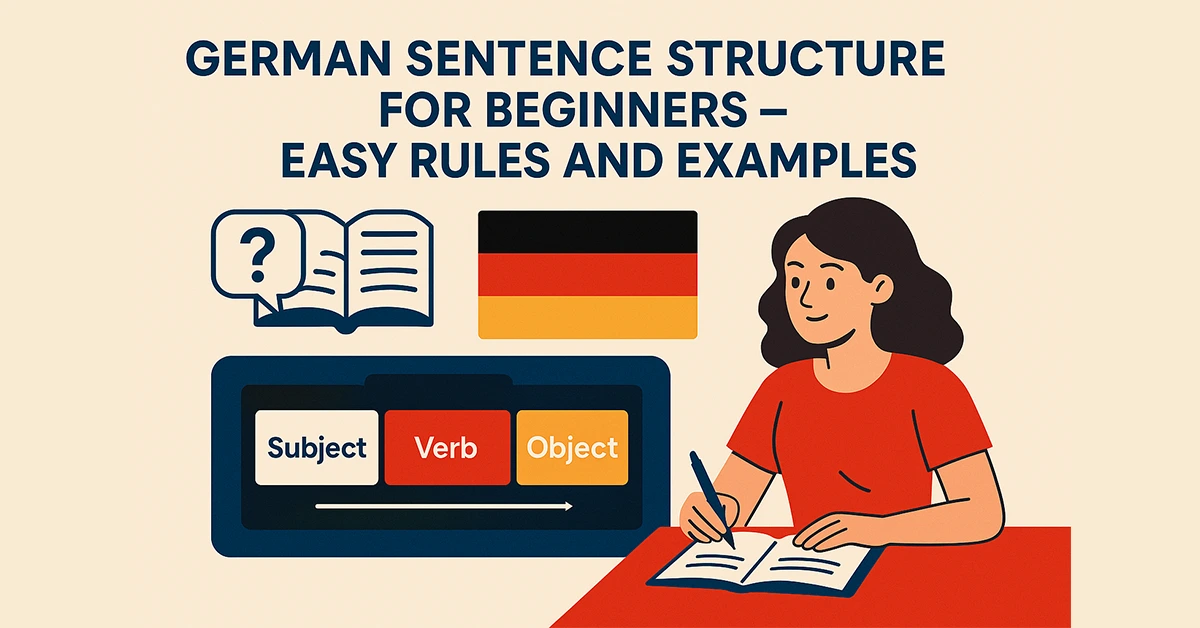german word order
-

German Word Order: Main vs Subordinate Clauses Explained Simply
Learn how German word order works in main and subordinate clauses. This guide explains clear rules, real examples, and key tips to master sentence structure.
-

German Sentence Structure for Beginners – Easy Rules & Examples
Learn German sentence structure step by step with clear examples and grammar rules. Master word order, verb placement, and build accurate sentences easily.